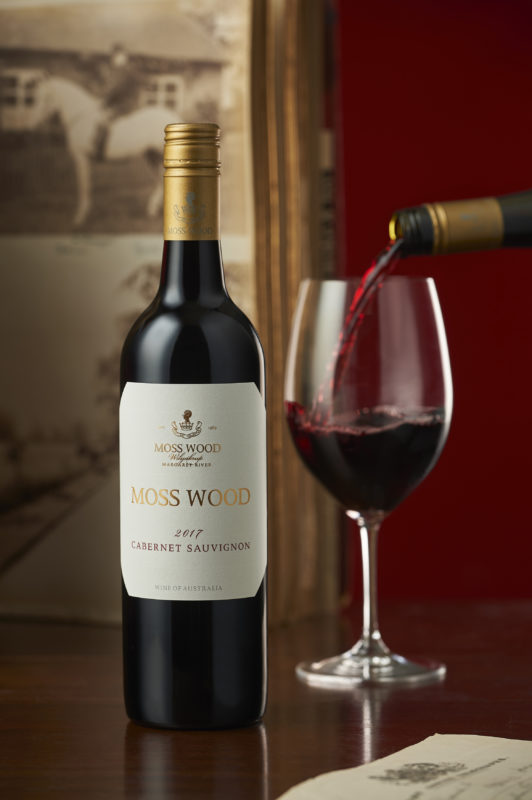Moss Wood 2017 Cabernet Sauvignon
MOSS WOOD 2017 CABERNET SAUVIGNON

Wine Facts
| Wine Fact | Data |
|---|---|
| Wine Fact Median Harvest Date | Data 10th March, 2019 |
| Wine Fact Harvest Ripeness | Data 11.7° Baume |
| Wine Fact Yields | Data 11.3 tonnes/ha |
| Wine Fact Ripening Time From Flowering to Harvest | Data 99 days |
| Wine Fact Bottled | Data 24/01/2020 |
| Wine Fact Release Date | Data 10/03/2020 |
| Wine Fact Alcohol | Data 12.5% |
Production Notes
As we said, it’s a fine line and we are entirely in the hands of Mother Nature. In 2017 she made plenty of idle threats but in the end took pity on the humble grapegrowers of Margaret River and delivered a classic, West Coast Indian Summer. We couldn’t have done any better if we’d written the script ourselves.
Aside from the generally low temperatures discussed above, we had drizzly weather during flowering and 16 days when minima were below the crucial 8°C. These cool nights were right at the beginning of the process, so appear to have done little harm, with yield for Cabernet Sauvignon being only very slightly below average. There was a 39mm dump of rain that came on 12th December which didn’t help matters but at least on that day the temperatures weren’t too low.
Through January we experienced delightful conditions, if somewhat mild. The mean temperature of 19.5°C was nearly 1° below average, so beach days were at a bit of a premium. February was similar and during the second week we also received 22mm of rain which freshened things up. It was during March when we started to have Chrissie Amphlett ringing in our ears, when we racked up 81mm of rain. Yes, with the arrival of autumn we expect to see some showers but not necessarily quite that much.
At this stage, the late flowering and mild temperatures were beginning to loom large. Moss Wood Cabernet Sauvignon needs at least 1100 hours where the temperature is between 18 and 28°C to reach full ripeness but by the end of March, it had received 1046 and astute readers will note that to achieve the additional 50+ hours, we needed another 10 bright sunny days.
At this point Mother Nature had a complete change of heart. The sun shone and most importantly, the rain stopped and we started picking Cabernet Sauvignon in the second week of April, at 13.0° Baume and with full flavour ripeness after 1120 hours of ripening under its belt.
Meanwhile, the blending varieties were going about their business. Cabernet Franc came off on 4th April at a very creditable ripeness of 13.9° Baume, followed 11 days later by Petit Verdot at an even more impressive 13.9 Baume. Who would have known it had been so mild?
Yields across the 3 varieties were varied. At 4.39 tonnes per hectare, Cabernet Franc was down 26% but Cabernet Sauvignon was virtually spot on its average at 7.37 tonnes per hectare and Petit Verdot went ballistic. Its yield of 7.25 tonnes per hectare was an amusing 32% above average. We don’t often get the chance to write a statement like that.
Production Notes
All the fruit was hand-picked and delivered to the winery where it was destemmed and placed in small, open fermenters. Each batch was seeded with multiple yeast strains and hand-plunged three times per day for extraction. Time on skins was typically 14 days, although one batch was pressed after a rare 22 days in the fermenter. As always, each one was tasted daily and pressed according to taste.
In May 2017, after malolactic fermentation in stainless steel tanks, each batch was racked to wood. All barrels were 228 litre French oak and 15% were new. In November 2018 all the individual batches were racked and blended for the first time. The final makeup of the assemblage was 88% Cabernet Sauvignon, 8% Petit Verdot and 4% Cabernet Franc.
People familiar with the traditional Moss Wood Cabernet Sauvignon blend will note the higher percentage of Petit Verdot than is usual. As we noted above, we had a surprisingly high yield. We had no hesitation including it in the blend because the mighty 2001 was 89%, 7% and 4%, respectively. We were more than happy with how that turned out.
In October 2019 the wine was racked from barrel for the final time and we conducted fining trials to see if we could improve the tannin balance but no fining was necessary. It was then sterile filtered and bottled on 1st Nov, 2019.

